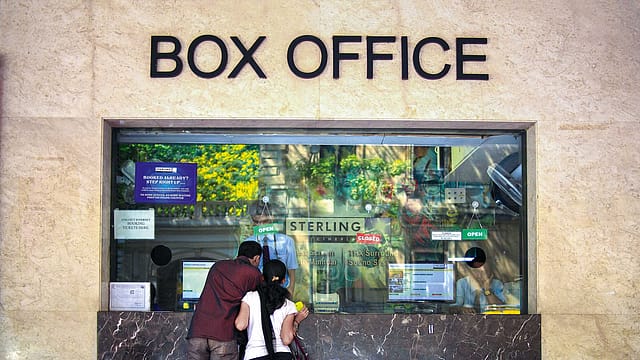Cinema is here to stay: Elara Capital
ADVERTISEMENT

Even as mobile content consumption is rising thanks to increased smartphone penetration and cheap data, cinema is likely to remain popular as Indians prefer large-screen viewing experience, said a report by Elara Capital on Friday.
According to the report, box office collections (domestic) of Hindi movies grew at 15% CAGR over FY15-20, and the momentum is expected to sustain over the next two years. “This trend has been observed in the U.S. and China also. Over 2014-15, U.S.-China box office collection grew at 3% CAGR,” Elara Capital said in the report, adding this was despite the entry of OTT platforms such as “Netflix, Amazon Prime, Hulu, and HBO Now.”
The report said box office collections will reach new heights if India adds more screens. “Although India and China are similar in terms of population size (1.3 billion vs 1.4 billion), China has 2x screens per million population (8 vs. 16). If India were to even double the number of screens, box office collections would reach new highs. PVR targets adding 80 screens in FY20, bringing the total count to 838 screens. Inox Leisure targets adding 72 screens during the same period, bringing the total to 643 screens,” it said.
The report says differentiated content is another lever for the growth of the industry. “During FY18-20, movies tailored after real-life and historical events had a considerable following. Movies such as Padman, Uri, Manikarnika, Gold, and Super 30 were instrumental in generating nearly 40% of box office collections, signalling an increasing preference toward movies with a social message,” it said. Another growth driver for the cinema industry, according to the report, is new talent.
January 2026
Netflix, which has been in India for a decade, has successfully struck a balance between high-class premium content and pricing that attracts a range of customers. Find out how the U.S. streaming giant evolved in India, plus an exclusive interview with CEO Ted Sarandos. Also read about the Best Investments for 2026, and how rising growth and easing inflation will come in handy for finance minister Nirmala Sitharaman as she prepares Budget 2026.
The market size of India’s OTT services is $303 million, whereas the size of Bollywood is $1.38 billion. Industry body FICCI in a recent report said the OTT market is expected to grow at 23% CAGR over the next five years in India, with the rise in smartphone penetration and cheap data. “Of $303 million market size, subscription-based video on demand (SVoD) comprises a mere 18%; this is expected to shoot up to 32% as consumers increasingly pay for quality content online,” Elara Capital said.
Karan Taurani, vice president-research analyst (media), Elara Capital, said digital releases are not making money yet. “Around 75% of overall revenue comes from big-screen cinema release, while digital makes up 13% and the rest from TV and satellite broadcasting. We believe a larger number of movies will continue to be released on a big screen to recover the high cost of production,” he said.
Taurani said the youth is driving digital media consumption, as smart TV and smartphone penetration in India surges. According to a Boston Consulting Group report, consumption per user in minutes of smart TV grew 3x during 2014-18, while the smartphone market multiplied 2.7x during the same period.
“Youth below the age of 23 years consume 25% of digital media and 39-53 years consume 15-18%. Traditional media consumption has been tapering off with growing online audience and reach achievable through the use of digital media,” Taurani said.
One of the factors influencing the growth of digital consumption is that India has the cheapest mobile data in the world (Rs 18.5/GB) but there is no major threat to cinema from digital and OTT consumption, the report said.
“About 400 Hindi films are released every year on average. We believe only a small portion will go for a direct digital release. The opportunity lies in the new style of dubbed Hollywood films, where the script is changed completely vs earlier where dialogues were translated; this has provided a big boost and led to a surge in Hollywood film box office collections,” it said.
The report said that screen scalability issues and any imposition of local body tax are the only two risks in the cinema space. “However, given efforts of movie producers, studios, and cinema chains, a change in the licensing regime for opening new cinemas would promote faster growth,” the report said.
